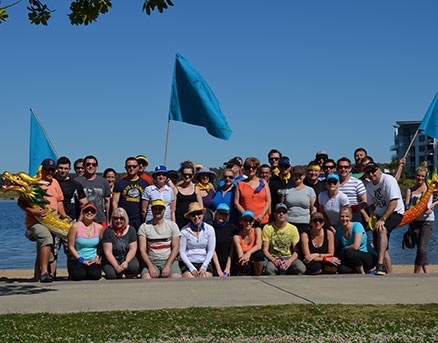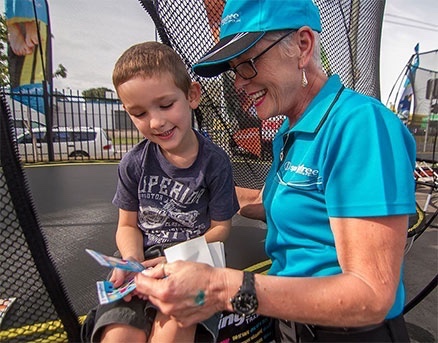Significant research has been conducted into the safety issues posed by spring-based trampolines.
We continuously update our database with new research on trampoline injury prevention and safety standards. Click ‘view report’ to download a pdf version of each paper.
| Paper | Publication Date | Summary | Reports |
| Survey of injury sources for a trampoline with equipment hazards designed out | 2012 | This research indicates that the more severe proportion of injuries on traditional trampolines can be significantly reduced with appropriate trampoline design. | View report |
| Effectiveness of pads and enclosures as safety interventions on consumer trampolines | 2009 | The research indicates there has not been a decline in trampoline injuries since the introduction of pads and enclosures on consumer trampolines and they are therefore not effective. | View report |
| Impact of Updated Australian Trampoline Standard | 2007 | The Chair of the Australian Standards Committee for Trampolines explains the Australian Trampoline Standard, noting important points for consumers. | View report |
| Emergency Department Visits for Pediatric Trampoline-related Injuries: An Update | 2007 | ED visits for trampoline-related injuries in 2000–2005 increased in frequency by 113% over the number of visits for 1990–1995. Trampoline use at home continues to be a significant source of childhood injury morbidity. | View report |
| Child injury due to falls from playground equipment, Australia 2002–04 |
2006 | This report breaks down the cause of injury in playground equipment. Trampolines are shown to be the cause of 23% of all reported injuries. | View report |
| Trampoline Injuries | 2006 | This study deals with the risk of trampoline injuries, concluding the traditional trampoline is a dangerous toy, with high number of injuries caused by falling onto springs and frame, or off the trampoline . The study clearly shows how dangerous trampolines are, and that injury risk information that should be taken seriously | View report |
| Injuries to Children in the United States Related to Trampolines, 1990-1995: A National Epidemic | 2005 | The rapid increase in the number of trampoline related injuries to children during recent years is evidence that current prevention strategies are inadequate. Children should not use trampolines at home, and the sale of trampolines for private recreational use should be stopped. | View report |
| Too Many Paediatric Trampoline Injuries |
2004 | This report concludes paediatric trampoline injuries have reached epidemic levels. The authors call for a ban of private trampoline use by children (the definition of a trampoline having a steel frame at the jumping surface, and using springs) | View report |
General Maintenance:
Your Springfree™ Trampoline is designed using the highest quality materials, resistant to outdoor weather conditions. However, all products will incur general wear and tear, so it's important to inspect your trampoline from time to time.
Replacing any required parts quickly will ensure the longest life span for your trampoline. Please contact our team if you notice any of the below, and we can assist you in replacing your part, and assessing the type of activity that may have caused a breakage outside of general wear and tear:
- Material flaws in the mat bed, mat edge system or net
- Missing trampoline rods or rods disconnected from the mat edge
- A bent or broken frame
- Missing plastic edge fittings/ broken cleats
- Enclosure support rods and attachment fittings missing or damaged
- Missing C-clips from the sockets on the frame
- Cracks or flaking in the PV coating encasing the fibreglass rods
It is highly unlikely under normal use that a Springfree FlexiRod™ will ever break or delaminate. Should you notice cracking or flaking on your trampoline rods, rest assured this is most likely sun damage caused to the "sleeve" which is a protective cover inserted over each fibreglass rod during the manufacturing process. While our sleeves are UV treated, over time and depending on the amount of UV exposure they've had, they may deteriorate at an accelerated rate.
Download our Maintenance Checklist to conduct your own visual inspection now!
General Usage:
- Don't take sharp objects or toys onto the trampoline
- With your Springfree™ Trampoline FlexRHoop™, only a soft rubber ball should be used
- Clear plastic balls have been known to magnify the suns rays and burn holes in trampoline mats - ensure these are kept off your trampoline
- Jumping in the centre of the trampoline will ensure the longest life span for your mat and other components
- Avoid using the FlexiNet™ as a jumping surface - while incredibly strong, this is a safety feature designed to protect wayward jumpers, and should not be used consistently for general rebounding
Efficient Exercise
Did you know that a 10 minute jump on a Springfree Trampoline is equivalent to a 30 minute run? According to a study completed by NASA, this means jumping is 68% more efficient than running.
Cardiovascular Fitness
Jumping on a trampoline is a moderate-to-high level aerobic workout that aids in maintaining cardiovascular fitness. Jumping will increasing your heart rate while taking less time out of your busy schedule.
Interval Training
On a Springfree Trampoline you can complete multiple movements from one interval to the next. Unlike typical modes of exercise that only allow for one movement (such as running on a treadmill, riding a bicycle or stationary bike, exercising on an elliptical or climbing a stair stepper), the active rest recovery period allows for an extended workout time.
Low Impact Exercise
Jumping on a Springfree Trampoline is a low impact exercise. A jumper’s vertical acceleration and deceleration is absorbed by the trampoline mat, taking up 80% of the shock.
Stronger Bones
The repetitive action of jumping improves bone mineral content and builds the musculoskeletal system. Each landing from a jump is double the force of gravity, which develops muscle strength over time and prevents bone diseases such as osteoporosis.
Detoxifying and lymphatic drainage
Bouncing on a trampoline stimulates the free-flowing lymphatic drainage system, helping rid your body of toxins, trapped protein, bacteria, viruses and other cell waste. The acceleration, deceleration and gravity of jumping on a trampoline create the ideal conditions for cleansing waste materials from our cells.
Mental Health
Physical activity makes you feel happy, positive and self-confident. Endorphins, the positive mood enhancing chemicals released during exercise, are triggered when jumping. An added benefit is the sheer fun factor of jumping up and down. Jumping on a Springfree Trampoline will give you the peace of mind that you’re safe, leaving you free to smile, laugh and feel happy!

A Springfree Trampoline isn’t just for the kids it’s also a great way for mum or dad to keep active. Download our fitness routines developed specifically for the Springfree Trampoline. No matter what your fitness goal is we have a routine for you!
Fitness Routines
Download the routines below:

We exist to change the definition of “trampoline”
Join us and be part of a dynamic and energetic team that is passionate about bringing safe backyard play to kids around the world. Learn more

What’s it like to work at Springfree
"Witnessing the joy on the kids’ faces when the install is complete or while they are in the store gives you that warm feeling. Its hard not to crack a smile when you see a 3yr old jumping on a trampoline laughing the entire time."- Domenic
"I love seeing people’s faces as they witness, in person, what our Springfree Trampolines are capable of."- Jonas

